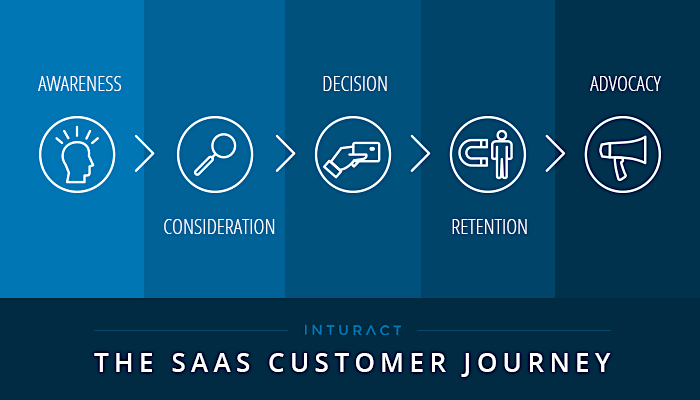10 Steps Go to Market Strategy Framework for SaaS & Tech
1. Evaluate and priorities opportunities for growth
To focus your Go to Market strategy, sales, and marketing efforts, assess market opportunities, validate and priorities use cases, and market segments. Before creating your Ideal Customer Profile, decide which opportunity to focus on.
Questions to consider:
• What are your company's top revenue-generating opportunities?
• Which customer segments or use cases are better served by existing sales channels?
• Which customer segments are best suited to the solution you offer? Which have a compelling reason to purchase?
• In which market segment can we establish market leadership?
• Which market segment has the simplest purchasing decision?
• Which segment makes the most of your company's strengths and differentiators?
• In which market segment can we expect fewer competitors in the near future?
• What customer segment or use case allows you to develop a complete product offering with tangibles and intangibles attributes more quickly?
• What are the obstacles to the success of the various opportunities?
2. Identify the target segment, the jobs to be done, and the motivations.
After assessing and prioritising market opportunities, describe the identifiable economic group of potential customers within that top growth opportunity. Ascertain that the target customer has a compelling reason to purchase the new product as soon as possible, and describe the specific motivation that will drive your product's success with them. This is where you define the so-called Ideal Customer Profile.
• What are the industries, sizes, and geographical boundaries of your target markets?
• What is the market maturity phase of your product's market category?
• Who are the intended users? Who is the Decision-Making Unit in charge of purchasing? Who has sway over the decision? Who makes the decision?
• How is the purchasing decision-making process going?
• What is the market size estimated to be?
• What drives your target customers' economic decisions to purchase your product?
• What are the target customers experiencing (pain)? What is motivating you to take action right now? What are they hoping to achieve? What exactly is their task?
• How and why does your product help potential customers reduce pain, perform the task at hand, and achieve the desired results?
• What transformation does your product provide?
• How is your core solution better suited to the target market than competitors or compensating behaviours?
3. Specify the entire solution (whole product offering)
Find out what makes the product offering "complete and compelling" in the eyes of the target audience. The comprehensive set of attributes and core services/products that the target audience requires to achieve their compelling reason to buy is referred to as the complete solution. To be complete, your core product/technology must be augmented with a variety of services, intangible attributes, and ancillary products.
• What do prospective customers inquire about in terms of offerings that your company does not have or cannot provide?
• Who or what else should be involved in a project to provide total value to the end-user (e.g., sales consulting services, predefined visualisations, integration with other tools, support service...)?
• What is the user's or decision-complaint? maker's What were the concerns expressed by prospective customers?
• What organisational and business model changes are required to achieve product completeness?
• How would sales respond to a proposal for a full solution? What should be included in your proposals' Total Cost of Ownership?
• Is it time to build a complete and low-risk solution in terms of market maturity, or should we focus on core product features?
• What other tools does your target customer use in addition to your product?
• What offering characteristics should we add to your solution and offering to increase your competitive advantage?
4. Identify potential collaborators and strategic alliances
It is unusual for a single organisation to provide every component of a complete solution. Identifying and then recruiting the necessary partners and allies is usually the only way to meet this market requirement. It entails identifying the right partners to serve as familiar selling channels.
• Which partners and allies would help make your technology/product more appealing to customers? What partners and allies could help round out the solution by providing services that your company cannot?
• Why should existing or new partners help you launch and sell your product? What would be an enticing, one-of-a-kind value proposition for partners?
• What partners and allies could help you expand your reach?
5. Develop, select, and plan sales and marketing channels
Identify and prepare the best distribution channels to raise market awareness and sell the entire solution. This step may overlap with the previous one in that you may have identified channel partners.
• Which channels, teams, and individuals should be involved and ready for the launch? (In the event of a launch)
• Who else should be involved in launching the infrastructure solution and maintaining those relationships?
• Which marketing channels should we use?
• What should the sales strategy and sales organisation approach be to meet the needs of the customers? What impact does it have on the direct sales team?
• What approach should your sales team take to sales enablement in order to sell a complete solution?
6. Determine the best pricing strategy.
Assist your customer in perceiving your product's high value and paying what it is worth. Suppliers, partners, and the sales channel must be appropriately rewarded for selling to the target customer. These requirements must be reflected in the pricing strategy.
• What is the economic impact of your product, as well as the time to value?
• What is the customer's value driver? What would be an effective pricing strategy?
• What is the total cost of ownership of your complete solution?
• What kind of incentive would be appropriate for partners? How should we structure pricing and incentives for the various channels in order to drive more deals through partnerships?
• What would be the best sales incentive plan to sell your new product or increase sales of your existing product? What is the proper ratio of current product sales to new product sales?
• How should the channel and sales team be structured to balance new and existing product sales? What would be the financial ramifications?
• How can the customer lifetime value be maximised? What other revenue streams can we tie to the new product in order to maximise customer lifetime value?
7. Examine the most formidable rival
Examine the competitive market for the "most dangerous" competitive solution. Analyze their capabilities and look for ways to develop and maintain a competitive advantage (other than trademarks and patents).
• Who do you think will be the most difficult competitor, and why? What might their next step be if they learn about your new Go to Market strategy or product launch?
• What can we take away from them? How do they contribute to the growth of the market category?
• What intangibles do they offer to reduce customers' risk perception? What combination of core features and product intangibles (total solution) would make your product more appealing than theirs?
• How does their product offering compare to "what the market requires"?
• What intangible product attributes could provide you with a long-term competitive advantage?
8. Develop platforms for positioning and messaging
Proper messaging positions your product and company as a credible provider of products and services to the target market by addressing the concerns of various types of technology adopters with a set of four distinct messages: technology messages, product messages, market messages, and company messages. It is critical to communicate the right mix of messages to each layer of the market infrastructure to assist them in positioning your product.
• What are your competitive strengths and differentiators in the market, according to market perception?
• How do existing and prospective customers refer to your product's benefits when discussing it? What words do customers or potential customers use to describe the problems with your product?
9. Align operations for product, marketing, sales, and revenue.
The best Go to Market strategies fail due to a lack of leadership, organisational alignment, and corporate-strategy alignment. The more complex it is to drive alignment within your organisation, the more difficult it becomes. Set up cross-organizational meetings as well as a Go to Market strategy committee to ensure alignment, manage expectations, and track success factors.
Answer the following questions:
• Who should be involved in the process to ensure the success of this plan across all Go to Market functions?
• What do we mean by "success"? What would be the success criteria for this new Go to Market Strategy? Are these goals cross-organizational and shared by all of your Go to Market leaders?
• How do we involve everyone and ensure that all of the various Go to Market functions are represented in this plan and agree to pursue it?
• What kind of follow-up process and cadence should we establish to ensure that we meet the expected deadlines and drive organisational alignment toward the Go to Market plan objectives?
• How will we ensure that this Go to Market Strategy is consistent with the corporate strategy? Who should we speak with? What are the other corporate-level growth initiatives?
• What marketing, sales, and product readiness requirements must be met in order to launch the solution or accelerate revenue growth?
• What other business model changes should we make to speed up the acquisition of new customers and increase revenue from existing customers?
10. Increase industry awareness, influence, and market pull.
Every market has an ecosystem of players between your product and potential customers. The other 90% of the market players in the ecosystem are influenced by 10% of the market players.
Leveraging the market ecosystem is the best way to help the market position your product in a way that highlights your strengths. Develop relationships with the top 10% of ecosystem players, address their concerns about your product, and nurture them with custom marketing assets that they can share with the rest of the market.
Understanding market ecosystem forces and cultivating relationships with the top 10% of ecosystem influencers are critical to increasing Word-Of-Mouth in order to position your product, optimise market pull, drive influence, and accelerate revenue.
• What are the layers (types of organisations and individuals) that influence your target segment's market?
• Who are the top 10% of organisations and people in each layer of your ecosystem?
• How do they perceive your company, your market, your technology, and your products?
• How can you best serve their interests in a way that creates a win-win situation in which you both benefit? (You provide them with insider information to bolster their "influencer" position, and they assist you by sharing the information you provide and providing valuable feedback.)
• What kind of collaterals do you need to create in order to meet the market ecosystem's various information needs?


